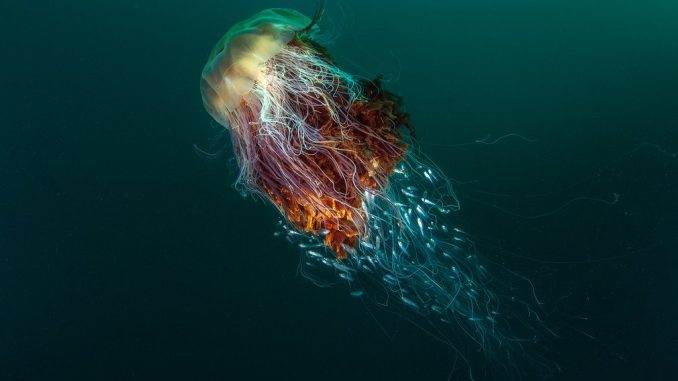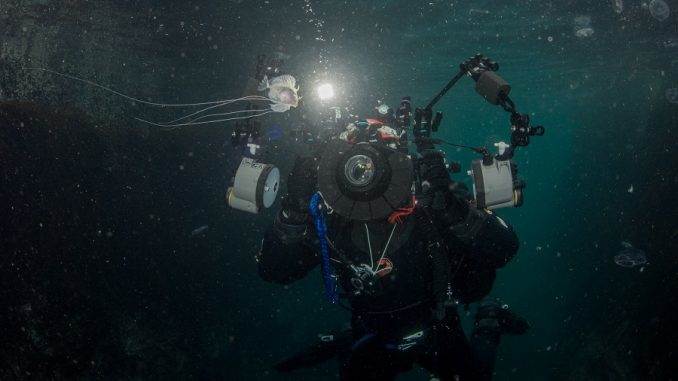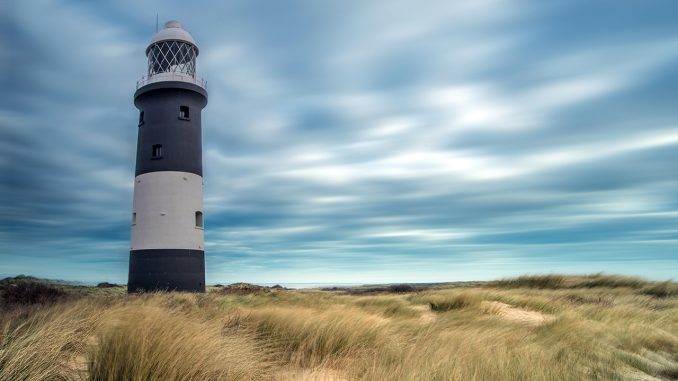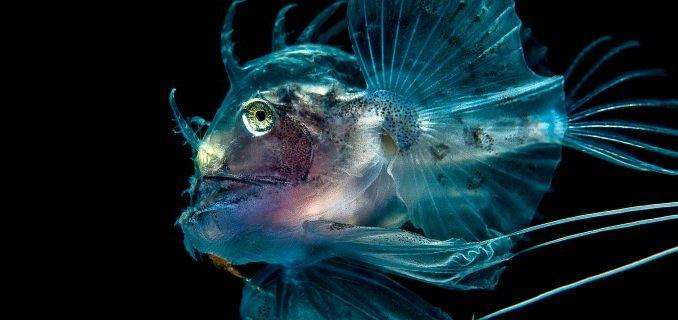In Sept, George Stoyle won the prestigious ‘British Wildlife Photographer Of The Year 2016’ award with his beautiful underwater jellyfish image, taken off the coast of Scotland (below) . We decided to interview George to find out a little more about the photographer behind this award and what motivates him.

How did you journey from being an ‘aspiring’ photographer to actually making a living from it?
I first became interested in photography in the mid-90s when, armed with a cheap compact film camera, I spent a year or so travelling around New Zealand. This really inspired my love of landscape photography which I also came to specialise in a bit later.
In the early 2000s I moved to Wales and started working, initially part-time, in marine ecology/conservation. I lived in Wales for a few years and dived fairly extensively around the coast.
The people I met during this time inspired me to take up underwater photography so, as soon as I could afford it, I bought my first underwater housing.
The next few years I spent working and travelling, diving and photographing, initially going back to the southern hemisphere and then working for some time in various parts of the Caribbean after taking a Masters in tropical marine ecology.
This is when I really started to become aware of the value of conservation photography. It was through my research on coral reefs that I really became inspired to start using photography to tell conservation-related stories with the aim of raising awareness of some of issues facing the marine environment.
I started out producing photo stories and this has recently evolved into making short films which is really where my main focus lies these days. To be honest I never really expected photography would turn into a career. I always hoped it would but it didn’t seem like a realistic option a few years ago. Photography was a hobby and passion for so many years but this seemed to slowly evolve alongside my work in marine ecology and now the two seem to have merged into one.
Was there anyone in particular whose work influenced you a lot?
In 1999 a friend of mine gave me a book by David Doubilet called ‘Water Light Time’ and this really opened my eye to what was possible with underwater photography. When I moved to Wales I met a small group of divers who were taking underwater photos locally.
This was the first time I’d really seen high quality images of UK marine life and I was blown away. A couple of years later I bought my own set up and progressed slowly over the years mainly influenced by the people I work and dive with.

What motivates you to continue taking pictures after many years?
Much of the photographic work I do now is about promoting the work of conservation organisations and research institutions, using photography and videography to document projects which work towards better protection of marine species, as well as contributing to the public’s greater awareness of marine conservation issues.
Photography has played an important role in conservation for decades and plays an increasingly crucial role in making people aware of the threats faced by the natural world. An image can be engaging, emotive and compelling, capable of telling a thousand words and more.
Ultimately photography can and does have a positive contribution in affecting global change and this is what inspires me to carry on.
There are so many issues affecting the marine environment today.
This year has just seen the most extensive coral bleaching in history, oceans are warming and becoming more acidic, fisheries are collapsing, species are going extinct. We continue to exploit resources at an unsustainable rate and the cracks are beginning to appear.
The world is changing as a direct result of our actions and as the problems continue to build, as human population continues to increase and as resources continue to dwindle I do genuinely worry about my daughter’s future and also our future as a species. That may sound a bit melodramatic, but the way we interact with this planet, on the whole, is clearly not working out too well. That said, there is a lot of good work going on in the world despite the constant negativity we are fed via the mass media and this gives me some encouragement.

What software and camera gear do you mainly use in order to achieve your best images?
I’ve been using Nikon cameras for nearly 20 years but recently I’ve changed some of my kit over to Sony mainly because the sensors are better and they also have the edge when it comes to video. The BWPA winning image was taken on a relatively old Nikon D700 in a Nauticam housing.
I’ve used this set up underwater for about 7 years now. Above water most of my images until recently were all taken with a Nikon D800. Regarding software, I use both Adobe Lightroom and Photoshop for stills and Adobe Premiere for video.
Have you taken any pictures which you would consider your finest images?
I do have a few favourites although I find that I’m never entirely happy with any of my photos to be honest, but this keeps me moving hopefully onwards and upwards.
Finally, congratulations on being overall winner of the British Wildlife Photography Awards 2016, how did it feel to win that prestigious award?
Obviously it’s great to have a photo selected above so many other incredible images and, as a photographer, it does give you some kind of renewed sense of motivation and purpose.
The jellyfish image was really a case of being in the right place at the right time and to be honest, in my eyes there were probably more worthy winners if you take into account the amount of effort people put into getting some shots, but then that’s the judge’s decision and I’m just very grateful they chose my image.
George’s Website – www.georgestoyle.com


Leave a Reply